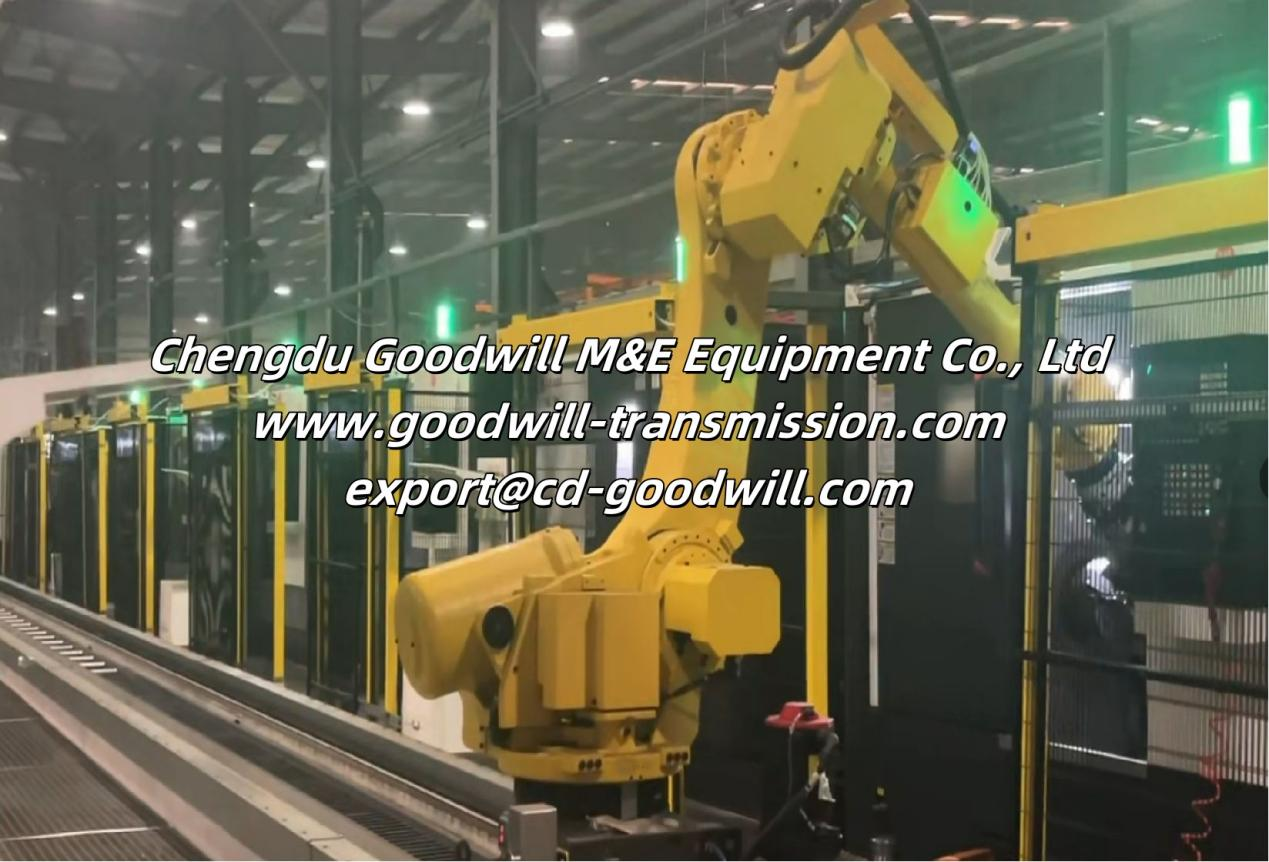Introduction
The manufacturing landscape is undergoing a revolutionary transformation. Where factories once relied on multiple robots or manual labor to produce mechanical power transmission parts, today, a single robotic arm can handle the entire machining process—from raw material to finished product. This leap in automation not only reduces labor costs but also enhances precision, speed, and consistency in producing critical components like gears, V belt pulleys, sprockets, couplings, and timing pulleys.
At Chengdu Goodwill M&E Equipment Co., Ltd, we’ve embraced this evolution. Our entire line of mechanical power transmission parts—including sprockets, pulleys, gears, timing pulleys, bearing units, couplings, racks, bushings, hubs, torque limiters, keyless shaft locking devices, overrunning clutch, motor bases, shafts, rail tracks, and shaft collars, and custom-machined components—are now produced by advanced robotic arms. This ensures unmatched accuracy, efficiency, and scalability for our customers.
The Shift from Traditional to Fully Automated Machining
Old Challenges in Power Transmission Part Manufacturing
In conventional setups:
Multiple robots or workers were needed to load, machine, and transfer parts.
Human errors in alignment and handling led to inconsistencies.
Higher labor costs and slower production cycles affected competitiveness.
The Robotic Machining Revolution
Now, a single robotic system manages the entire production process:
Loading Raw Material – Robotic arms pick up castings, forged blanks, or bar stock.
Precision Machining – CNC machines, guided by robotic automation, produce high-tolerance gears, sprockets, and shafts.
Automated Quality Checks – Vision systems inspect each part (e.g., timing pulleys, couplings) for defects.
Unmanned Material Handling – Finished parts are sorted and moved without human intervention.
Result: Faster throughput, zero manual errors, and 24/7 production capabilities.
Why Robotic Manufacturing Matters for Power Transmission Parts
Precision is critical in gear systems, belt drives, chain drives and shaft assemblies. Even minor deviations can cause:
Increased wear in gear systems.
Vibration issues in belt drives.
Premature failure of timing belts and pulleys.
By using AI-powered robotic arms, we ensure:
✔ Micron-level accuracy
✔ Consistent quality
✔ Faster delivery of custom solutions, including forged, stamped, and machined components.
The Benefits of Robotic Manufacturing for Buyers
By choosing robot-made power transmission parts, you gain:
✅ Lower Costs – Reduced labor and waste mean competitive pricing.
✅ Faster Turnaround – No manual bottlenecks; rapid production even for custom orders.
✅ Scalability – Need 50 or 50,000 V-belt pulleys? Robots deliver without slowdowns.
The Future: Smart Factories & Lights-Out Production
The next frontier is fully autonomous “dark factories” where:
IoT sensors monitor products in real time.
Self-adjusting CNC machines compensate for tool wear on products
Machine learning optimizes cutting paths for complex custom components.
For years, we have continuously invested in technologies to maintain an agile, reliable, and cost-efficient supply chain for our customers.
Precision Power Transmission Parts—Made Perfect by Robots
The era of robotic manufacturing is here. At Chengdu Goodwill M&E Equipment Co.,Ltd, every pulley, taper bushing, shaft, sprocket, gear, timing pulley, coupling, and CNC-machined part is now produced with unmatched precision and efficiency—thanks to advanced robotic automation.
Need high-quality, robot-made power transmission components?
Contact us at export@cd-goodwill.com for standard or custom solutions tailored to your machinery!
Post time: Jun-13-2025





